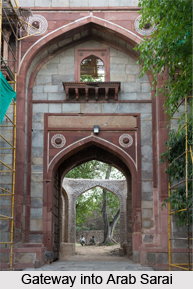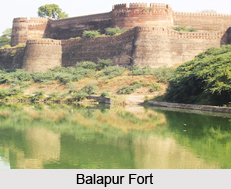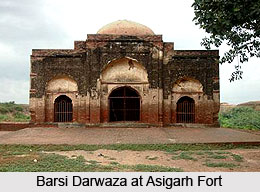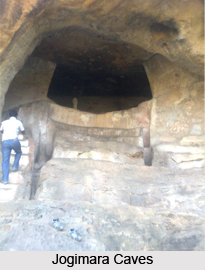 Arab Sarai was constructed by Haji Begum, Emperor Humayun`s widow. It was built in1560-61 to house the three hundred Arab mullas (priests), she is said to have brought with her from her pilgrimage to Mecca.
Arab Sarai was constructed by Haji Begum, Emperor Humayun`s widow. It was built in1560-61 to house the three hundred Arab mullas (priests), she is said to have brought with her from her pilgrimage to Mecca.
It is a big sarai (rest-house) with arched cells against its enclosure-walls. Almost all the cells are now in a dilapidated condition. The only structure worthy of notice is the northern gate, which is seen by the visitors on their right while proceeding to the emperor`s mausoleum after crossing Bu Halima`s Garden. The gate stands 12.2 metres high from its plinth and is built of local quartzite with red sandstone dressings and marble inlay. The main gate-chamber is hexagonal and was covered with a dome, now collapsed, with plastered interlace. Above the main arch of the gateway is a balcony window supported by six carved brackets, and on each side at the same level are more balcony windows with pyramidal domes enriched by yellow and blue tiles.
Arab-Sarai has two other gateways from the east and the west respectively. According to an inscription on the eastern gateway, that is close to the south-west corner of Humayun`s mausoleum, it was actually the entrance to a mandi (market), added to it by one Mihr Banu during the reign of Jahangir. The market consisted of a series of arched rooms, now in ruins.
As one approaches Humayun`s Tomb from Marhura Road, one passes through a rectangular enclosure with a tomb in its northern half and a gateway on its east. This is the entrance of Bu Halima`s Garden. Nothing is known about Bu Halima and the origin of the garden locally named after the lady but architecturally the enclosure-walls and the gateway of the garden belong to the early Mughal period (16th century). It was certainly built earlier than the Arab-Sarai, the northern wall of which abuts on the plastered exterior of the eastern garden-enclosure.
The garden is enclosed by rubble walls of local quartzite. Its eastern gateway is a simple structure consisting of an oblong main gate-chamber with octagonal wings. The central portion of the eastern gateway of Bu Halima`s Garden contains an ornamental arched recess, enclosing an arched doorway and a superimposed balcony-window supported by four brackets.
The facade was once decorated with brilliant coloured tiles, very little of which are still extant. As in other monuments in the Humayun`s Tomb complex, very little of the tile inlay work has survived the ravages of time and mankind. At the north-east and north-west corners of the enclosure-walls are octagonal bastions, surmounted by small domed chhattris with glazed tile work. The dilapidated structure in the north corner of the garden enclosure is said locally to contain the grave of Bu Halima.




